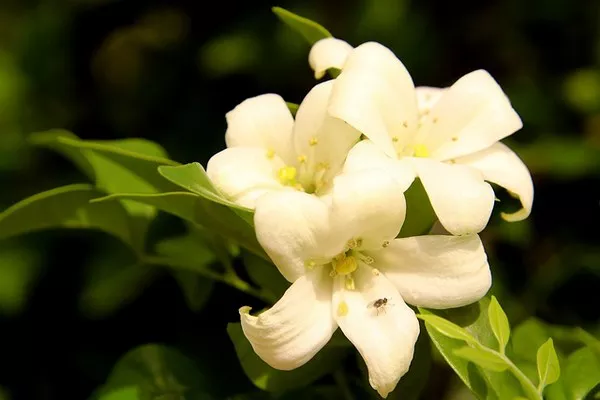Flowers are nature’s masterpiece, enchanting us with their vibrant colors, delicate shapes, and captivating fragrances. These ephemeral wonders can be preserved indefinitely through the art of flower pressing. Whether you’re an avid gardener, a nature enthusiast, or someone who appreciates botanical beauty, learning how to store pressed flowers is a rewarding endeavor. In this guide, we’ll explore the methods and techniques to help you preserve the essence of these blossoms, allowing you to enjoy them for years to come.
Why Press Flowers?
Pressing flowers is a centuries-old practice that allows you to capture the essence of blooms at their peak. Whether you wish to create stunning art, commemorate a special occasion, or simply cherish the memory of a beautiful bouquet, preserving pressed flowers offers a multitude of benefits:
Eternal Beauty: Pressed flowers retain their original colors and forms, providing a visual delight that lasts indefinitely.
Memorabilia: Pressed flowers can hold sentimental value, making them perfect for commemorating important events like weddings, anniversaries, or graduations.
Versatile Artistry: Pressed flowers can be incorporated into a wide array of creative projects, including homemade greeting cards, botanical prints, and decorative arrangements.
Educational Tools: Botany enthusiasts can use pressed specimens for study and reference, aiding in plant identification and scientific exploration.
Eco-Friendly: Preserving flowers through pressing is an environmentally friendly way to enjoy their beauty without contributing to waste.
Before delving into the techniques for storing pressed flowers, it’s crucial to understand the tools and methods necessary for the pressing process.
Essential Tools and Materials
Fresh Flowers: Begin with freshly picked or purchased flowers that are free from blemishes, spots, or discoloration. Flowers with flat faces, such as daisies, violets, and pansies, press exceptionally well.
Blotting Paper: Absorbent blotting paper, often known as a “flower presser” or “drying paper,” is essential for flower pressing. It helps remove excess moisture from the flowers.
Cardstock or Acid-Free Paper: This paper provides a solid backing for your flowers, ensuring they retain their shape and color. Acid-free paper prevents yellowing over time.
Heavy Books or Flower Press: Heavy books or a dedicated flower press are needed to apply even pressure to the flowers during the drying process.
Parchment Paper: Used to protect your flowers from sticking to the pages of the book or the flower press.
Tweezers or Small Spatula: These tools help handle delicate flowers without damaging them.
Now that we have the tools ready let’s explore the techniques for storing pressed flowers:
Step-by-Step Guide to Storing Pressed Flowers
Step 1: Harvest and Prepare
Harvest your flowers when they are at their peak, ideally in the morning when their moisture content is lower. Avoid collecting flowers after rainfall or dew, as excess moisture can hinder the pressing process.
Remove any unwanted leaves, stems, or extraneous material from the flowers. For thick, fleshy flowers, such as roses or sunflowers, it’s advisable to split them in half to facilitate the pressing process.
Step 2: Layering and Pressing
Take a sheet of blotting paper and place it between two sheets of cardboard or cardstock. This forms the foundation of your press.
Arrange your prepared flowers face-down on the blotting paper in a single layer. Ensure they are evenly spaced, with some space between each flower to avoid overlap.
Place another sheet of blotting paper on top of the flowers.
Carefully insert this layered stack between the pages of a heavy book or into a flower press. Apply pressure evenly.
Add additional layers of flowers, blotting paper, and cardboard as necessary, making sure each layer is as flat as possible.
Close the book or flower press, and secure it with rubber bands or straps.
Step 3: Drying and Curing
Store the pressed flowers in a dry, cool place with good air circulation. Avoid damp or humid environments to prevent mold or discoloration.
Allow the flowers to dry for 2-4 weeks. Check their progress periodically. When the flowers feel dry and papery to the touch, they are ready for the next step.
Step 4: Preservation and Storage
Carefully remove the pressed flowers from the book or flower press using tweezers or a small spatula.
Place each flower between sheets of acid-free paper or parchment paper to prevent sticking and yellowing.
Store the preserved flowers in an acid-free photo album or a decorative frame, depending on your intended use.
Keep the flowers away from direct sunlight, as prolonged exposure can cause fading. Ideally, store them in a dark, cool place, such as a closet or drawer.
Advanced Techniques
While the basic pressing method works wonderfully for many flowers, some blossoms require additional steps to preserve their intricate details and colors. Here are a few advanced techniques to consider:
Microwave Pressing: A quicker alternative to traditional pressing, this method involves using a microwave and a special microwave flower press to expedite the drying process. Be cautious and follow instructions carefully to avoid overcooking the flowers.
Silica Gel Drying: Silica gel is a desiccant that dries flowers quickly while maintaining their color and shape. This method is ideal for delicate flowers like orchids and lilies.
Ironing: For those in a hurry, ironing pressed flowers between sheets of wax paper can accelerate the drying process. Use a low heat setting and press gently to avoid damaging the delicate petals.
Conclusion
Preserving the beauty of flowers through pressing is a delightful and artistic way to cherish their elegance for years to come. Whether you’re interested in crafting or wish to commemorate special moments, the process of storing pressed flowers is both rewarding and sustainable. By following the steps outlined in this guide and experimenting with advanced techniques, you can create stunning floral keepsakes that will brighten your days and provide endless inspiration. Enjoy the art of pressed flowers and let nature’s beauty flourish in your creations.


